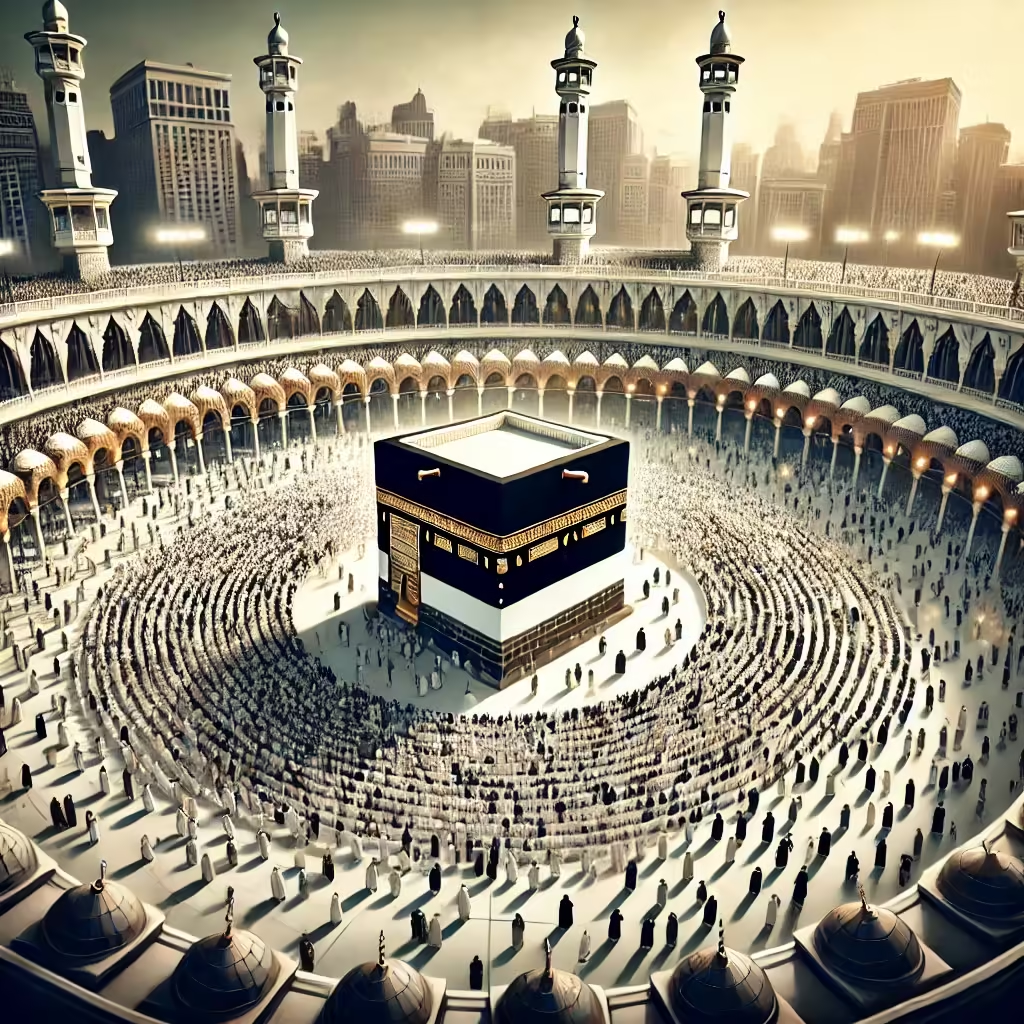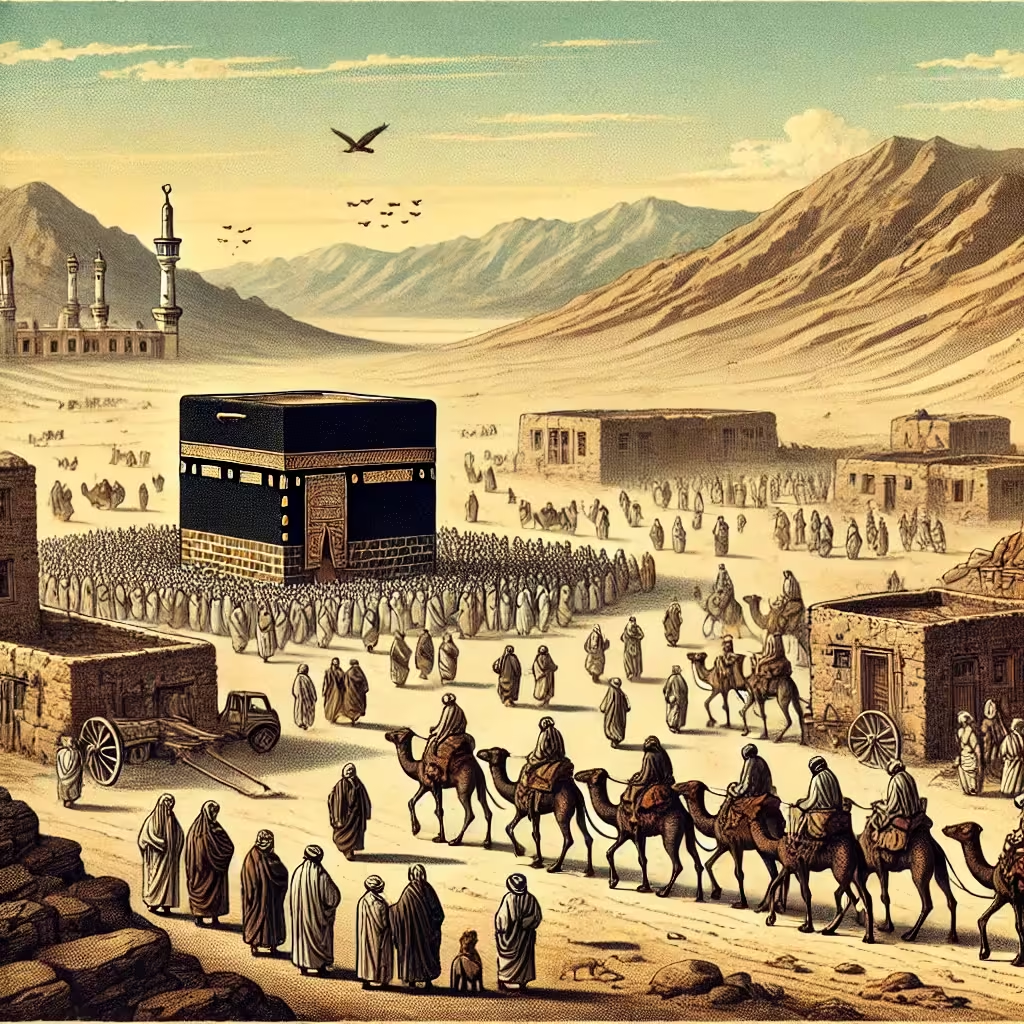Table of Contents
Introduction
This is the second part in a series of articles on “Lessons from Hijrah“. You can click here to read the full series, ALLAH willing.
In this article, we address the following questions:
- Was the Meccan period solely a time of upbringing?
- What was the first priority on the Prophet’s (PbuH) agenda, where He spent the most time?
- The Prophet (PbuH) nearly risked His life in His eagerness for certain leaders to accept Islam… Who were they?
- How does the Meccan stage reveal the Prophet’s (PbuH) strategic vision?
The Prophet’s Mission in Mecca
In the previous article, we discussed that anyone with a message or mission needs a state to bring their vision to life. A state allows ideas to move from the minds, hearts, and souls of individuals into tangible realities. Now, let’s reflect on how Prophet Muhammad (Peace be upon Him) worked towards establishing Islam as a way of life, encompassing governance, leadership, and authority.
Islam is not just a set of beliefs or a message; it is a complete system. If we imagine that the Prophet (Peace be upon Him) had remained in Mecca solely as a preacher, Islam as we know it today would not have taken the same shape. The Hijrah (migration) to Medinah was a pivotal moment, leading to the development of laws that governed politics, economics, societal matters, relations, and even warfare. This comprehensive Islam, established in Medinah, went beyond preaching to become a fully realized way of life. Had the Prophet (Peace be upon Him) not migrated and Islam not evolved into a state, it would not be the religion and system that we recognize today.
If Islam were merely a spiritual call, the Prophet (Peace be upon Him) would have remained in Mecca. He was not personally persecuted in Mecca, and if Islam was only about acts of worship like prayer, charity, fasting, and pilgrimage, Muslims could have practiced these freely since the Kaaba, the House of ALLAH, was in their midst. But Islam is much more than these rituals. It is a comprehensive system that includes governance and the establishment of a state. This is why, even during His time in Mecca, the Prophet (Peace be upon Him) was actively working to realize Islam in terms of governance, rule, and authority.
The Three-Step Plan
From this, we can understand that the Meccan period was not solely focused on education and spiritual preparation. While it was indeed a time for nurturing and educating the early believers, it was also a period of searching for land, supporters, and the necessary strength to establish a state. When we examine the Prophet’s activities during the Meccan stage, we find that His agenda centered around three main objectives.
The First Objective: Inviting Quraysh Leaders to Islam
The first objective was to invite the leaders of Quraysh to Islam. These leaders held authority in Mecca, which was not only their city but also the heart of the Arabian Peninsula, known as the “Mother of Cities”. The Prophet (Peace be upon Him) understood that if Mecca accepted Islam, the rest of the Arabs would likely follow. Just as idol worship had spread from Mecca to the rest of the region, the acceptance of Islam by the Quraysh could have a similar influence.

The Prophet (Peace be upon Him) was deeply concerned about guiding the leaders of Quraysh, knowing their acceptance could lead to widespread adoption of Islam. His efforts were so intense that ALLAH addressed Him in the Qur’an, saying:
“Perhaps, [O Muḥammad], you would kill yourself with grief that they will not be believers“1
(Suraat ‘Ash-Shucaraa’ 26:3)
The Prophet’s longing for their guidance was so profound that it seemed as if He was nearly overwhelmed with sorrow when they refused to believe. ALLAH also reminded Him:
“Then perhaps you would kill yourself through grief over them, [O Muḥammad], if they do not believe in this message, [and] out of sorrow“2
(Suraat ‘Al-Kahf 18:6)
For ten years, the Prophet (Peace be upon Him) tirelessly focused His efforts on inviting the leaders of Quraysh to accept Islam. Despite His persistent attempts, they resisted His message and refused to believe.
The Second Objective: Reaching Out to Ta’if
The second objective in the Prophet’s mission was to reach out to Ta’if. When Quraysh’s leaders remained unmoved, the Prophet turned His attention to Ta’if, which was considered the second capital of the Arabs and an important city in the Arabian Peninsula. This is highlighted in the verse where ALLAH says:
“And they said, “Why was this Qur’ān not sent down upon a great man from [one of] the two cities?”3
(Suraat ‘Az-Zurkhruf 43:31)
The two cities referred to here are Mecca and Ta’if. Mecca was the primary capital, and Ta’if held significant influence as the second.
In Ta’if, the people worshiped the idol Al-Lat, which was housed in a sanctuary and guarded, much like the Kaaba in Mecca. The valley surrounding this idol was treated as sacred ground; the people of Ta’if, the tribe of Thaqif, revered it similarly to how the people of Mecca honored the Kaaba. They prohibited cutting trees or hunting within the valley, and anyone who sought refuge there was considered safe.
Recognizing the importance of Ta’if as a center of power in the Arabian Peninsula, the Prophet (Peace be upon Him) went there to seek support. However, the people of Ta’if also rejected His message and turned Him away.
The Third Objective: Appealing to Other Tribes
The third objective in the Prophet’s plan was to reach out to the various tribes. He began approaching every tribe that came to Mecca and visited the Sacred House, presenting Islam to them in hopes of finding support, strength, and help. The Prophet (Peace be upon Him) was not only seeking followers but also looking for a land that could serve as a stronghold for the religion. His efforts during the Meccan period were focused on establishing a state that could uphold the principles of Islam.
The Prophet (Peace be upon Him) continued this mission for many years, approaching around 20 to 30 tribes, but it wasn’t until ALLAH guided Him to the Ansar (helpers) from Yathrib (later known as Medinah) that His mission found the support it needed. The Ansar (helpers) embraced Islam and became the backbone of the faith, offering both their strength and their land, which would become the new capital of the religion. This marked a turning point, as Medinah became the center from which Islam flourished into a comprehensive system and state.

The moment of Hijrah (migration) was not merely about seeking to leave Mecca, but rather about seeking the establishment of a state. Hijrah (migration) was the path toward achieving that state where Islam could be fully realized and implemented. The Prophet (Peace be upon Him) left Mecca, where He had been under the protection of His people, to create a state that would embody the teachings of Islam and bring His message to life. Throughout the Meccan period, the Prophet was in search of this very purpose. Eventually, ALLAH prepared the way through the Ansar (helpers), the people of Medinah, who became the strength behind Islam and whose land became the capital from which the faith would flourish.
Conclusion
In part three, ALLAH willing, we will address important questions such as:
- Is it true that Islam cannot thrive without a state?
- Why were the Companions distinguished by the standard of Hijrah (migration), being called Muhajirun (Emigrants) and Ansar (Helpers)?
- Do people follow the religion of their rulers, or is it that the rulers reflect the state of the people themselves?
These thought-provoking questions will guide our next discussion as we continue to explore the significance of statehood in the spread and establishment of Islam.
Sources:
- Mohamed Elhamy. دروس الهجرة | 2. هل تعرف جدول أعمال النبي ﷺ قبل الهجرة؟ | محمد إلهامي. YouTube Video.

